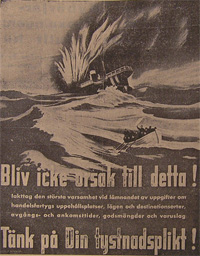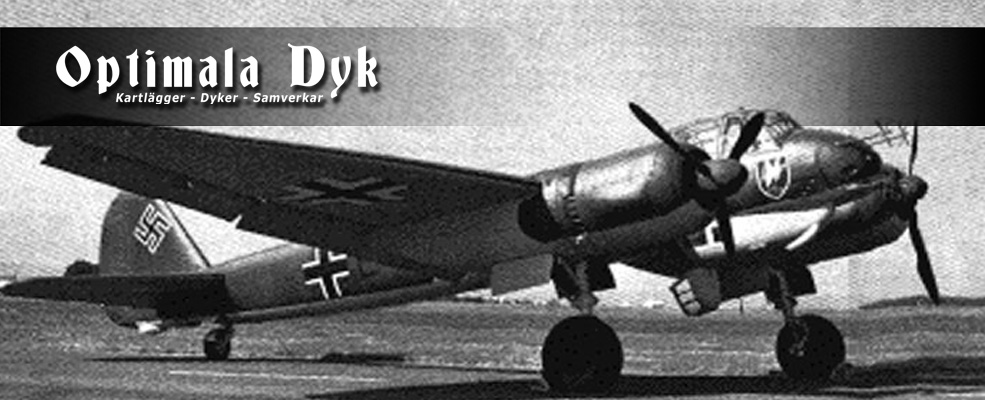War in the Kattegat 1939-1945.
A article in seven parts.

Part 5: 1943
From the summer of 1943 and onwards, the Allied superiority grew in the air, partly due to the help of the Americans and partly due to the relative decrease of German number of planes. During daytime, American bombers attacked and at night, the British attacked with their planes, which had a greater load capacity. Fuel shortages for the Germans meant that during the latter part of World War II, many German fighter planes could not be used. In 1943, the German courier flights over Sweden culminated. However, the regulations were changed during the latter part of the year when only civilian-registered plans were allowed to be used.
Between January 2 and March 30, the RAF carried out several mine laying missions during flights in the Kattegat. A total of 49 nightly missions.
On February 11, the German steamship Kurt Hartwig Siemers ran aground and sank at Nidingen. The ship, which was 1147 grt and was built at Wilton Scheepswerf & Machinefabriek in Rotterdam in 1918, was 70 m long and 11 m wide and sunk on its way from Gothenburg to Germany with paper bales. All 22 men on board were rescued.
On February 26, a Junker 88A5 crashed in the Kattegat. At the time the plane was out on a night navigation exercise when the plane crashed into the sea and the entire crew died.
On April 1, the Swedish submarine HMS Ulven struck a German mine southwest of Pölsan and sank. All 33 on board died. When Ulven struck the mine, the Swedish Navy had swept mines down to 15 m, but after the accident they changed the routines and swept down to 20 m, which meant that more mines were found. On August 2, the submarine was salvaged by the Swedish Navy.
On April 4, the Norwegian steamer Rygia hit a mine near Skagen and sank.
On April 29, the Lancaster W4898 crashed during a mine laying mission in the Kattegat.
On May 17, the Norwegian ship Bygdöy sank after hitting a mine in the Kattegat.
On May 28, the German Sperrbrecher 22 sank.
On June 27, the steamer Sigrid exploded and sank after a collision with a mine.
Between 17 September and 9 October, the RAF carried out several mine laying missions during flights in the Kattegat for 14 nights.
On 13 October, the German transport vessel S / S Telde was sunk at 2969 grt off Ålborg.
Between December 16 and January 1, the RAF carried out several mine laying missions during flights in the Kattegat for 7 nights.
On December 16, the German minesweeper R-54 was sunk at Anholt. On the same day, it was noted in Hallandsposten that it was time to buy the last Christmas presents before Christmas.

